
Zoopla House Price Index: November 2025
28 Nov 2025House prices fall for the first time in 18 months across southern England, but threat of new property tax removed from 210,000 homes.
Read more
The UK rental market is starting to normalise as supply and demand rebalance, while affordability remains a key constraint on future rent growth.
Annual rental growth sits at 2.4% as market conditions rebalance
Rental demand is down 24% against a year ago, linked to improved mortgage affordability for first-time buyers
Rental supply is 19% higher than a year ago with higher yields attracting landlord investment
The average UK rent is now £1,300 a month, with rents even seeing small falls in some markets
A strong understanding of local dynamics will demonstrate your value in a softer market, supporting landlords with competitive pricing, quality and service
Rental market conditions are the weakest they've been in 5 years. Letting agents are getting 24% fewer enquiries to rent homes than a year ago, a trend linked to falling migration levels and improved mortgage availability for first-time buyers.
As demand softens, supply is rising with a fifth more homes available to rent than a year ago. The increase in supply means homes are staying on the market for longer, averaging 16 days to find a tenant compared to just 12 days in 2023. However, this is still a quick turnaround compared to the pre-pandemic average of 20 days.
This combination of more homes and weaker demand has stalled rental growth, which is just 2.4% higher than July 2024. This is the slowest pace of rental inflation for four years (since July 2021) and less than half the annual rate recorded a year ago (5.1%). The average UK rent is £1,300 a month, with rents posting small falls in some markets as weaker demand and higher supply impact rent levels
Together, these factors are giving the market a much-needed rebalance, but it highlights the need for a proactive and data-led strategy to secure tenants and reduce vacant periods. It's a new reality for agents to navigate, where a well-priced, well-marketed property is key to success.
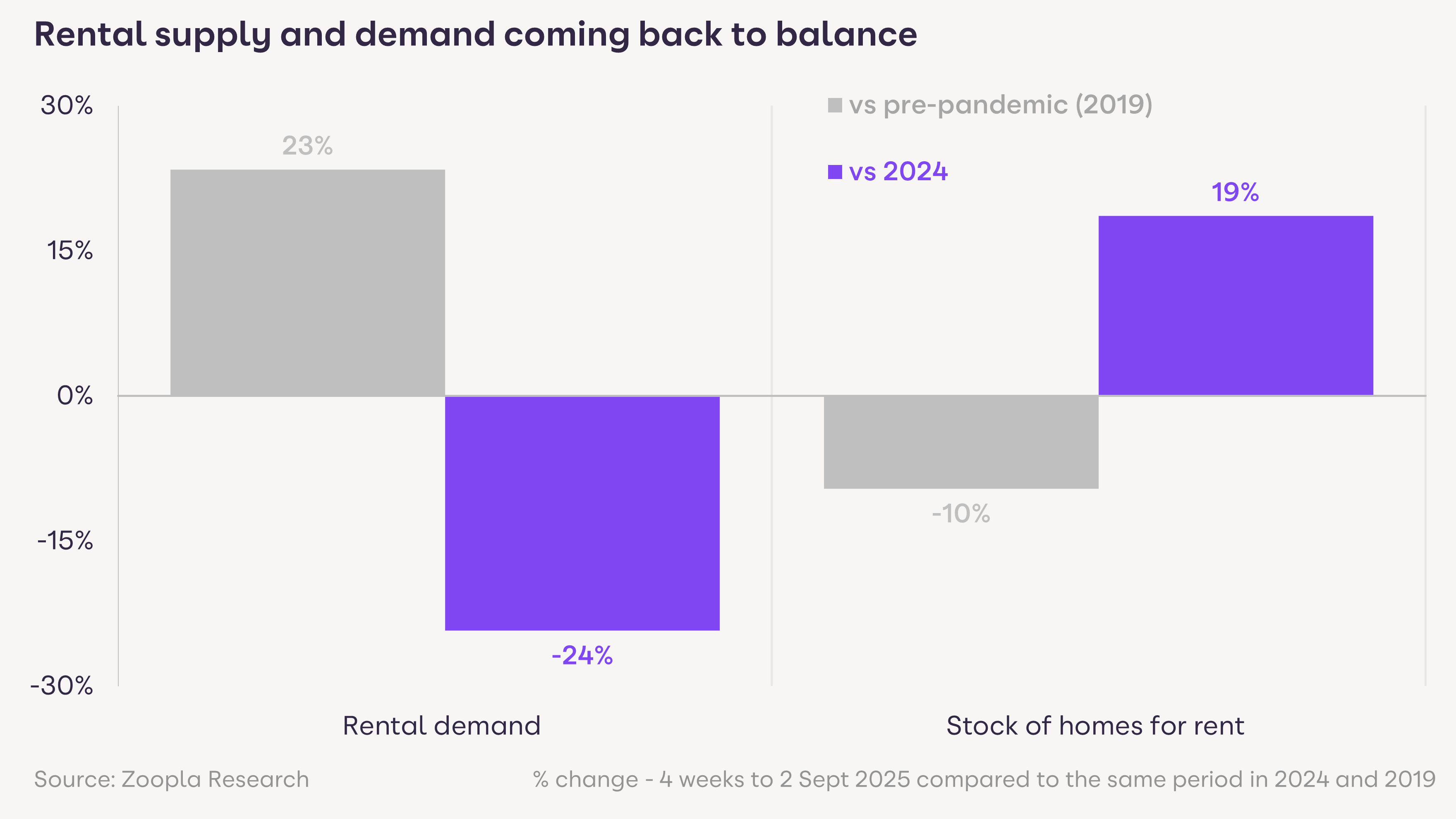
Discover our powerful agent tools, designed to help you boost brand visibility and attract more business.

A lack of supply and strong demand since 2020 led to a 36% jump in rents, significantly outperforming the 20% rise in house prices. This has pushed average gross yields to 6% nationally, making buy-to-let an attractive prospect again.
This is having a direct impact on the number of rental homes available. New buy-to-let loans for home purchases were up 60% in Q1 2025. This, combined with more renters transitioning to homeownership thanks to a 20% boost in borrowing capacity due to relaxed affordability testing, is actively freeing up homes and increasing supply.
The new influx of rental stock presents an opportunity for agents to grow their portfolios and demonstrate their value in a market where landlords need to be competitive in pricing, property quality and service for tenants.
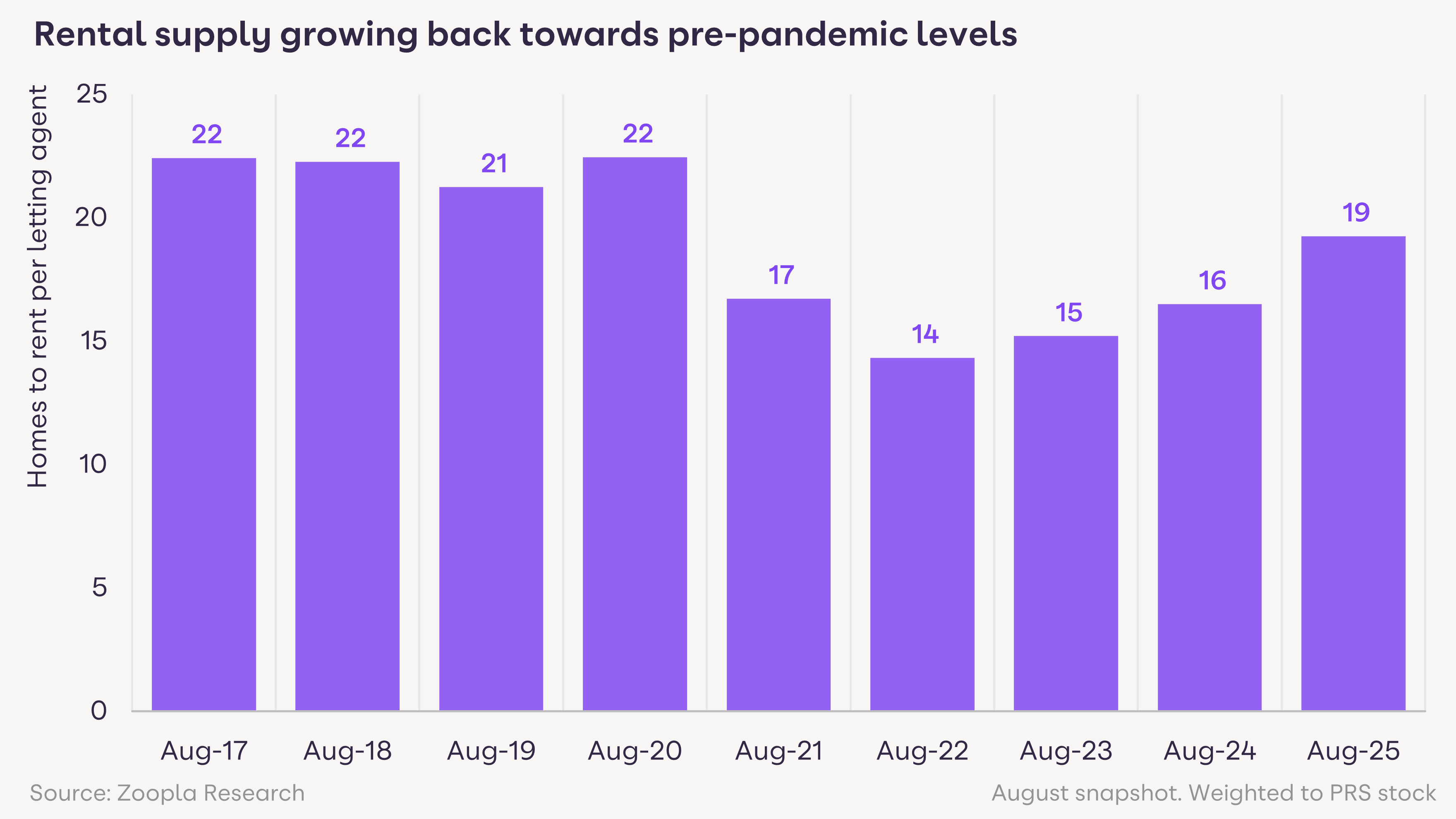
The number of homes for rent is a third higher across all regions except London, including in the South West (36%) and the East Midlands (31%).
London is bucking the national trend with rental supply only 6% higher than a year ago. London's yields are more modest (5%) and the deposit required for a mortgaged buy-to-let property is significantly higher (£187,000 in London versus £29,000 in the North East).
A strong understanding of local dynamics is your competitive edge in navigating a softer market. Understand what’s driving supply and demand in your specific area to define pricing strategy, attract good tenants and advise on investment opportunities.
Every 1.5 seconds a mover connects with an estate agent or housebuilder on Zoopla. See how your business can win with us.

Demand for rental homes exploded in the post-pandemic years. As the economy reopened and migration for work and study grew rapidly, it peaked in mid-2023. Then a trebling in average mortgage rates from 2022-23 hit property sales, further boosting rental demand.
The frantic rental demand of the post-pandemic years is now easing partly due to a halving in migration due to visa rules along with rising incomes turning renters into first-time buyers. There’s been a 30% jump in first-time buyer mortgages in the last year, a key reason why more rental supply has been released.
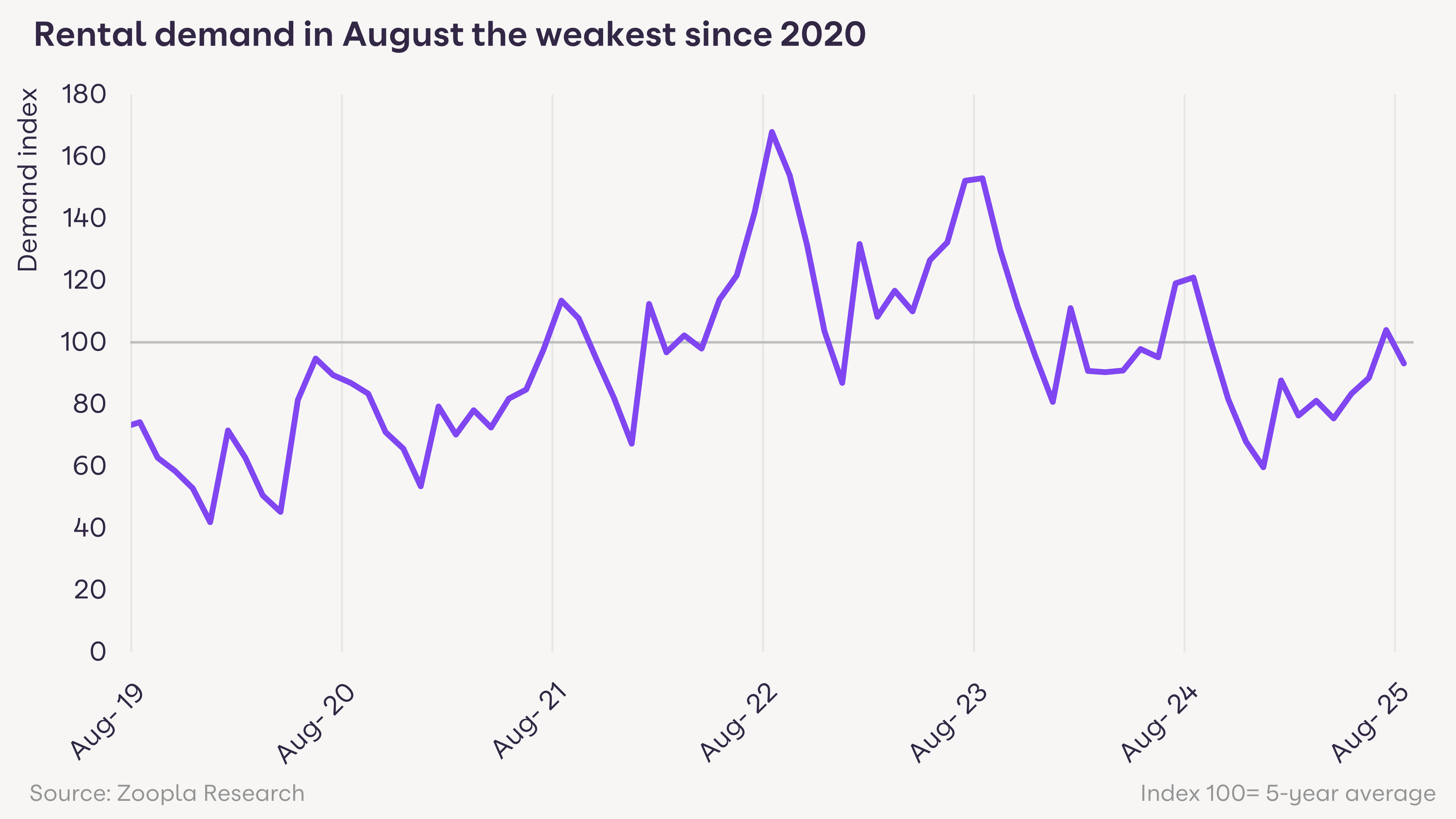
The affordability of renting has reached a natural ceiling. The average UK rent rose by almost £80 per week over the last 5 years - £4,100 per year - putting immense pressure on renters.
Rental inflation has now slowed sharply across much of the country. At a localised level, rents are falling in cities like Bristol (-0.5%) and Leeds (-0.6%) as these markets adjust. Across regions, annual rental growth sits at 2% in London, Scotland and Yorkshire and the Humber, with the highest growth in the North East at 4.6%
It’s important to remember that many private renting households are on below-average incomes. Almost a third rely on housing benefit to support their renting costs, and this allowance has not kept up with rental increases.
For agents, a successful pricing strategy must now balance a landlord's desire for income with a tenant's ability to pay to avoid longer vacant periods or potential arrears.
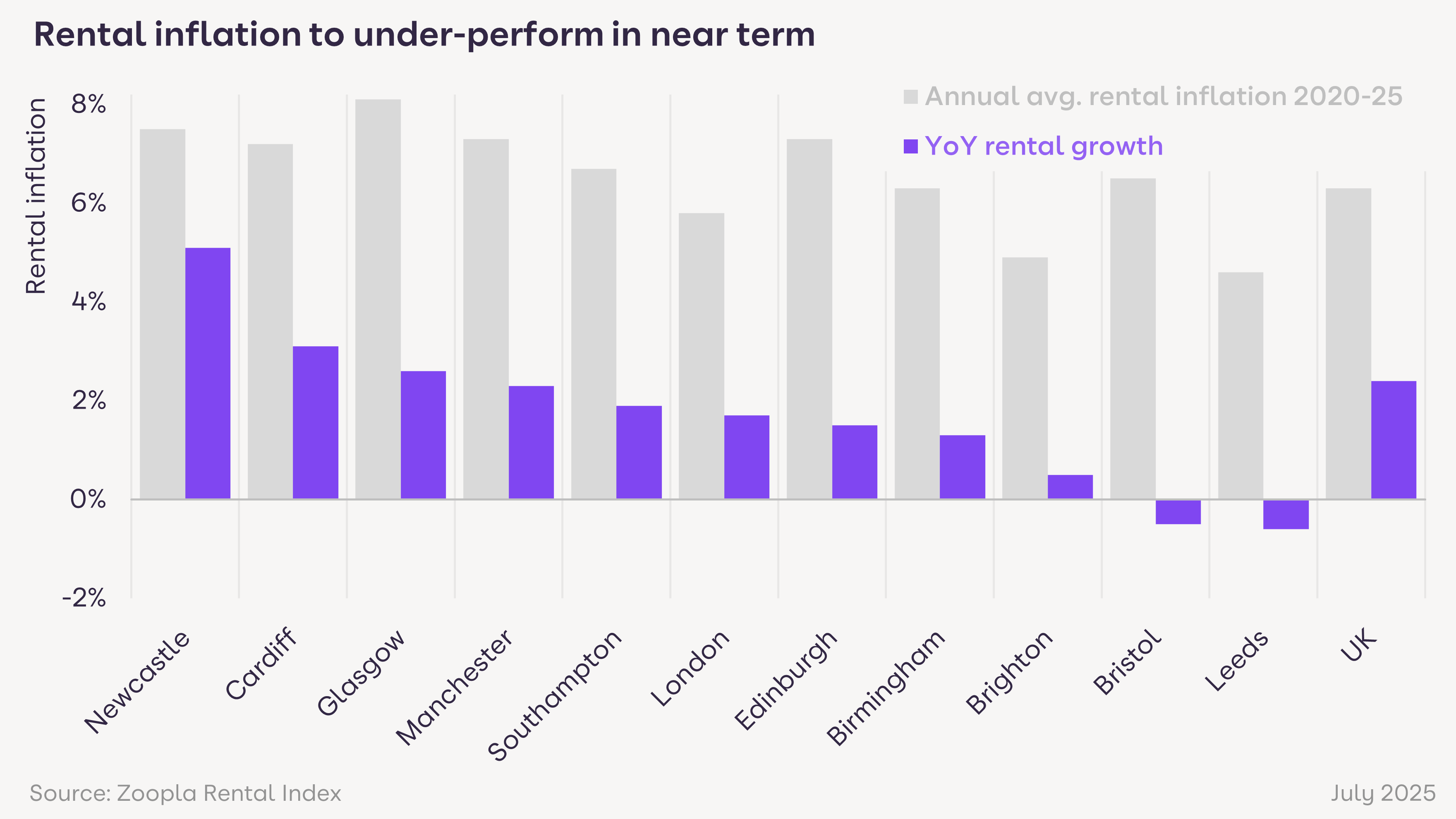
The rental market is normalising after a frantic few years. While home ownership remains a challenge for many, rental demand will remain above pre-pandemic levels, but a steady recovery in rental stock will continue to rebalance the market and offer new opportunities and challenges for agents.
We project rental inflation to be around 3% over 2025. The long-term solution to alleviating pressures and fostering a healthy market is to encourage new investment and grow the supply of homes for rent.
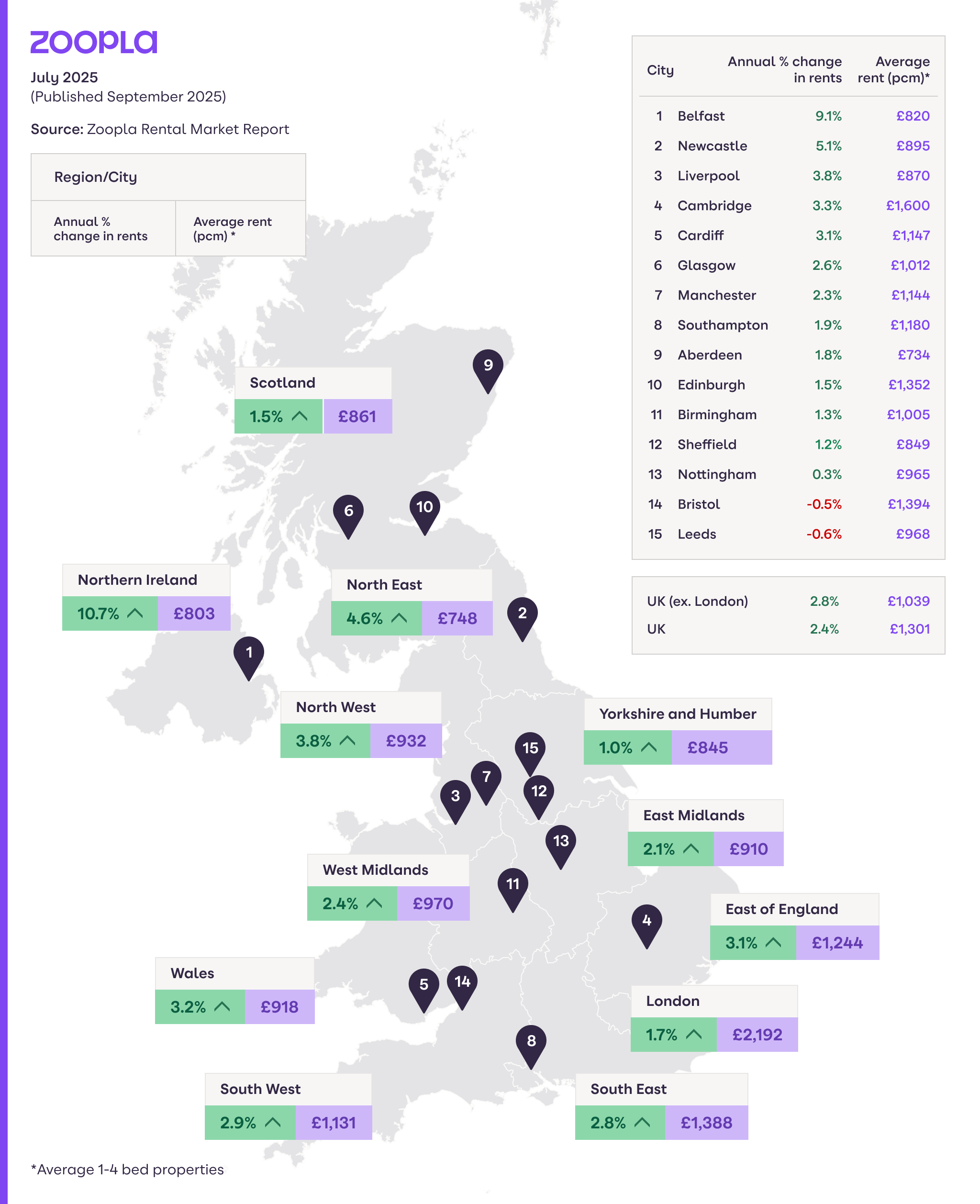
Tap into our well-known brand, unique audiences and pipeline of motivated movers.

The Zoopla Rental Market Report is a repeat transaction index, based on asking rents and adjusted to reflect achieved rents. The index is designed to accurately track the change in rental pricing for UK housing.
Download the September 2025 Rental Market Report (PDF, 413kB)
Data is until July 2025 and published in September 2025
There were 24% fewer renter enquiries in the four weeks before 2 September 2025 compared to the same period in 2024
Our gross yield figures are the annual rental income before costs as a percentage of the capital value of private rented homes
New buy-to-let loans increasing by 60% is from UK Finance 2025 Q1
The rise in rental supply across all regions by more than a third compares the 4 weeks to 7 September 2025 vs the same period in 2024
The buy-to-let deposit required in London assumes a higher-rate taxpayer buying a typical rented home and a lender interest cover ratio of 145%
The 30% jump in first-time buyer mortgages comes from UK Finance FTB mortgages data, comparing H1 2025 vs H1 2024
We try to make sure that the information here is accurate at the time of publishing. But the property market moves fast and some information may now be out of date. Zoopla accepts no responsibility or liability for any decisions you make based on the information provided.

House prices fall for the first time in 18 months across southern England, but threat of new property tax removed from 210,000 homes.
Read more
From house prices to mortgage rates, here are the key factors set to shape the UK property market in the coming years, and what this means for you.
Read more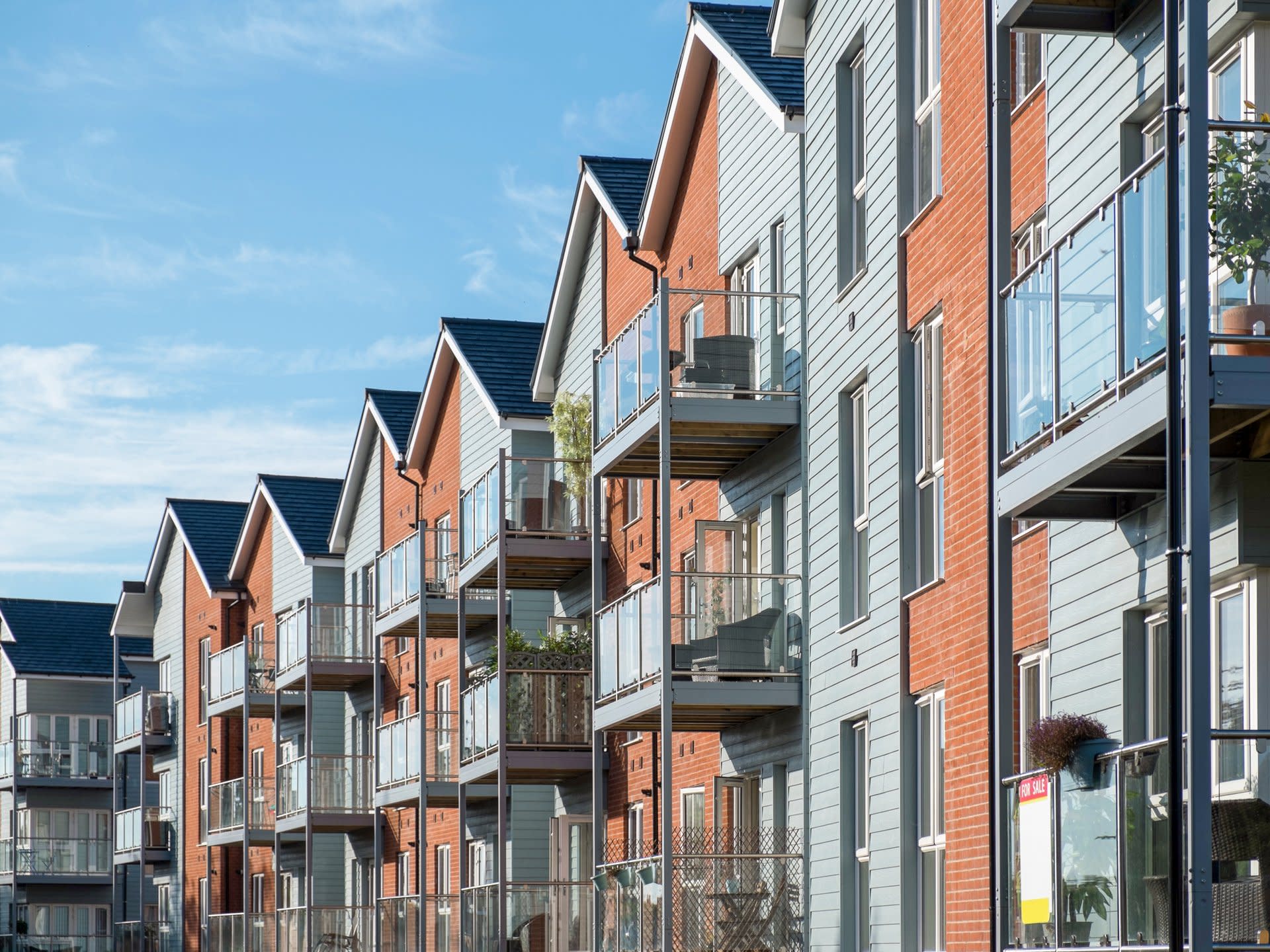
Rental inflation has slowed, which will be welcome news to renters, but there are still 12 people chasing every home for rent. Growing supply is essential to support those on lower incomes and policy reforms for the rental market need to minimise the impact on supply.
Read more